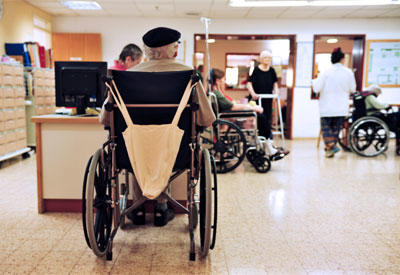
A tragic twist of the pandemic opens a window to talk about how we pay for long-term supports and services (LTSS). LTSS refers to help with everyday chores life like shopping, cooking, cleaning and so on, as well as personal assistance with daily activities like dressing, bathing, eating, and walking.
While LTSS can be needed by persons of any age, the fact that well over 80% of pandemic deaths claimed persons aged sixty or older, most in residential care, begs for solutions going forward, and better understanding of how we pay for LTSS.
So, who provides LTSS support when needed, and who pays for it? Over 70% of all LTSS in the country is provided by family and friends. No one sees this diminishing, it’s a labor of love. The tasks needed however, can outstrip what someone is able to do, either physically or mentally. The option then is to turn to paid caregivers either in the home or in a residential care facility. Nearly 30% of LTSS is provided by paid caregivers.
Who pays? Per the Kaiser Family Foundation, family out of pocket expenses pay 16%. Private insurance pays 11%, and other public and private sources, including the Older Americans Act, pay 20%. The remainder at 52% is Medicaid, our national insurance for the poor. Why? Because long-term, ongoing care is expensive, people become impoverished paying for it.
So – what’s worth talking about here? The Older Americans Act is underfunded, and Medicaid support of LTSS has a glitch. First Medicaid: the default for Medicaid payment is nursing home care; with care in the home considered an option, requiring a “waiver” of rules to accomplish. This is nuts.
In 2016, Michigan Medicaid average LTSS costs were $187.00 per day for nursing home care, $78.20 per day for care in the home. It’s gone up since, but the ratio is still fair. We are fortunate to have excellent nursing homes in southwest Michigan, we need them. But the costliest care should not be the default.
In Michigan, Medicaid funds the MIChoice waiver to support adults age 18 and up who have care needs on par with nursing home care, but who choose to have that care delivered to the home. It’s highly successful and significantly less costly. You can serve many more, for less.
With the 85 and older population being the fastest growing segment of the population, states have scrambled to grow “waiver” options with their Medicaid LTSS dollars rather than remain dependent on nursing home care as the default choice.
2016 statistics show Oregon leading the country, spending over 80% of its Medicaid LTSS dollars on home-based support. Michigan has not been successful. We ranked 6th worst, still showing 60% of Medicaid LTSS dollars spent on institutional care.
What’s needed is twofold: 1) to shift Medicaid’s federal policy to default to home and community-based programs, funding nursing homes as an option when needed, and 2) shift the state Medicaid budget to allow more funds to flow to home and community-based settings.
These changes are doable. The flexibility provided when shifting to lower cost options have allowed successful states to serve more people where they want to be served, lower per capita costs considerably, and build in quality incentives to reward quality home-based and nursing homes with increased reimbursement.
And the Older Americans Act (OAA)? It’s the biggest national initiative providing information and LTSS for the non-Medicaid population. 85% of recipients of OAA services under Title IIIB, a flexible section that can tailor home support to individual needs, say that this assistance helped them to remain in their home, where the majority of Americans want to live as they age. Cuts have reduced this funding to levels not seen since before 2002. This must be reversed.
We need to do this for all our sakes.
